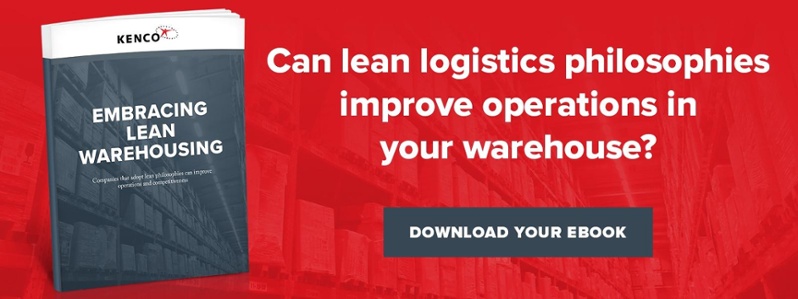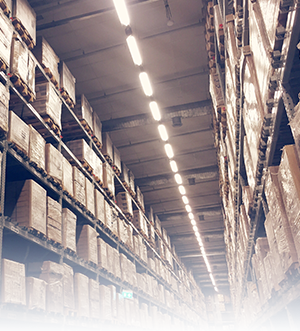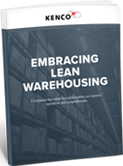
Gamification is a technique rapidly gaining in popularity within the 3PL industry. While it can be costly, the basic argument for implementing it is to fight against tasks that can easily become routine and prevent employees from"zoning out." An unengaged employee is more likely to contribute to errors and mistakes, which is why we've previously discussed embracing the concept of gamification to avoid those process-efficiency hiccups.
Gamification can do so much more than
When intelligently harnessed, gamification can increase the engagement you want to see in every one of your employees: attention to detail, adherence and, ownership of processes, and a drive to improve their quality of work and ultimately your customers' experiences.
It can be a powerful tool in your arsenal to achieve the end result you want for your customer.
How Do We Quantify Quality?
Gamification is successful because it offers direct, anticipated rewards to high performers through things like incentive pay and notoriety among peers and recognition from superiors. While this is easy to tie to metrics like employee productivity or on-time shipment, it becomes a little harder to quantify in the realm of quality which relies at least partially on subjective judgment.
While there is sometimes a scratching of heads to come up with good quality metrics they are absolutely necessary to drive the right behaviors in your value streams. Determine which outcomes equal quality in the eyes of your supply chain and customer base and the applicable quality standards, then set goals for your employees to pursue those outcomes to earn "quality points" within the warehouse gamification model
For example, part of adopting an "attitude of quality" is understanding how your work impacts the warehouse as a whole. Within the gamification model, assign numerical values to certain quality activities. Some ways you can accomplish this is through assigning quality bonus points for completing tasks, such as cross-training, Gemba walks, or even just a month-over-month trend of a reduction in errors
Think way back to the game of Tetris (or Candy Crush, if you prefer). It’s not enough to just be fast. In Tetris, if you make errors, over time, you ultimately lose. In Candy Crush, you don’t necessarily lose, but if you aren’t thinking about what you are doing and are not careful when swiping, you lose out on a lot of value you could have added. Call of Duty, Halo, you name it…all of these reward quality work––we just don’t think of it as quality. We prefer the terms strategic, cautious, or just smart. Training, error rate reduction, process development, adherence, Good Documentation Practices…these are all examples of working smarter, and we can add all of them to gamification models with a little innovation.
If you don’t, over time, you will ultimately lose.
Transforming Gamification
Gamification itself is a straightforward concept: perform effectively to the standard in the X column and get the reward in the Y column. It relies heavily on productivity at face value, but quality adds dimension to the gamification model. It's not a straight-shot to the finish line; it will require moving in all directions and recognizing and respecting concepts and standards that are not directly linked to the forward momentum of productivity.
If you only
This will require the buy-in of management to lead the way. When implementing gamification, it’s important the logic incorporated into your technology includes rewards for quality work. For example, an associate might be hitting it out of the park at 140% of their capacity, but a high error rate in their performance will ultimately come back to haunt you. This is where quality metrics can add value.
The addition of quality to your warehouse gamification metrics is more than an addition of depth. It's also a safeguard against shortcuts. When only time or volume is on the line, it's tempting to sacrifice smaller details like labeling correctly, securing packages properly, or following an established standard to achieve favorable metrics.
“Never let the quality of your work suffer at the hands of speed. Your gamification system should reflect this principle.”
Gamification aims to take advantage of employees' natural competitive instincts. For some, the line between 'thinking outside the box' and taking a shortcut is a very fine one, and ultimately one that will pass on poor and inconsistent results to your end customers.
Challenges to Mixing Quality and Gamification
In regulatory facilities, such as pharmaceuticals or medical devices, regulatory requirements can add an additional layer of complexity to gamification, but where there is a will, there is a way. GMP audits of work zones and
This culture shift of rewarding quality based behaviors instead of only productivity takes time, and your leadership will need to invest in these "rewards" to ensure quality truly becomes a part of your gamified culture.
Using gamification and rewarding memory and consistency in these behaviors helps cement “quality” in your associates’ daily work. At the end of the day you want to be able to answer “Yes” to this question: did they do their work in the correct order, with the correct tools, within the right amount of time and without error.
To Sum It All Up
Mastering the implementation of quality into this process is a challenge, but it's one well worth
Ready to continue down the path of peak performance? Pursue efficiency and follow best practices with the guidance of our in-depth eBook: Embracing Lean Warehousing.




